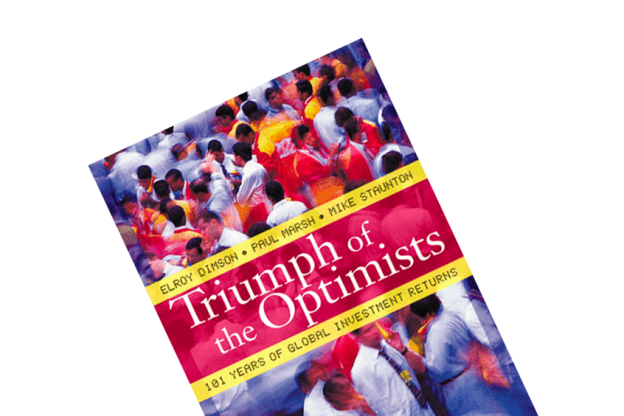Abstract
- Triump of the Optimists is a look back on asset classes’ (stocks, bonds, currency) return across 16 countries over the period 1900-2000. American stocks have returned 6.7% annually during this century. Each dollar would have grown into $711 after inflation. Danish stocks have returned 4.6%.
- It has been expensive to be in cash during this period, since inflation has diminished each dollar’s purchase power with 95.8%.
- The book confirms What Works on Wall Street‘s findings, namely that value strategies such as low P/E or P/BV drastically improve returns.
Triump of the Optimists is a look back on asset classes’ (stocks, bonds, currency) return across 16 countries over the period 1900-2000. There are tons of valuable lessons to be extracted from such data. I’ll try to sketch out a few of them.
Indeed, the optimists have triumphed
Warren Buffett’s “bullish on America”-statement is infamous. His confidence in the nation’s ability to invent, sell and grow is unlimited. Had you shared Warren’s enthusiasm in the beginning of the 20th century, you surely would have triumphed. Each dollar invested in 1900 would have grown to $711 after inflation.
The US market’s 6.7% annualized return is quite a lot better than i.e. Denmark’s 4.6%. Sweden was the best performing nation with 7.6%. This 0.9% difference between US and Sweden may not sound like a lot. But during a century, this nearly one-percent difference would have ensured you 2.5 times as much capital in the end ($1,700 per dollar). It’s not without merits Einstein called compound interest the eighth wonder of the world.
The pessimists’ downfall
What if one didn’t share a Warren-type vision for the world, but rather kept a pessimistic outlook throughout the century and thus kept one’s net worth in cash? You would have done horribly. Inflation would have diminished 95.8% of each dollar’s purchase power, thus leaving a measly 4 cents of groceries in 2000 for each 1900 dollar bill one’s grandfather kept in his mattress. The morale? You have to invest – at least some of the time – in order to not to be crushed by inflation’s mighty force.
To index or not to index, that is the question..
The investment results above were achieved ‘merely’ by plowing capital into index funds. What if, however, you applied a strategy instead? You may remember from What Works on Wall Street that it can be very profitable to do just that; Triumph of the Optimists cements those findings.
Each dollar invested in 1926 (note the time period is 26 years shorter) would have grown to 5,180 nominal dollars had you focused exclusively on American micro-cap stocks. That’s an annualized return of 12.1%. Right in its heels is the small-cap strategy with 11.9%, turning each dollar into $4,666 during those 75 years.
To an aspiring value investor’s great excitement, Triumph of the Optimists conclude that value strategies outperform all others. Had you implemented a low P/BV strategy you would have raked in £13,680 (nominally) for each pound invested in 1926.
Conclusion? Stock market indexing is an excellent way to beat inflation and build wealth, but following a time-tested strategy seems like the road to a very enjoyable retirement.
A look-back on Denmark’s performance
Part II of Triumph of the Optimists is a walk-through of each of the 16 countries’ historic performance, including Denmark (my home country). What would you have cashed in if your great grand father invested i 1900 and kept it for a hundred years? Had he invested in the Danish krone (DKK, currency), you would have inherited 1.2 DKK per 1 DKK. Danish bonds did ten times as well, returning 12.7 DKK. The most profitable asset class, stocks, resultet 96 DKK per 1 DKK after inflation. It’s nowhere near the results of Sweden or US, but it sure would be nice to inherit a million DKK per 10.400 DKK invested in 1900!
What has happened since 2000? 17 years ago, the Danish stock market indexes were valued at $105 billion – around half of Greece’s $204 billion at the time. Today, Novo Nordisk’s market value alone is more than the indexes’ 2000-value. The market cap of largest Danish index, OMXC20, was 2,000 billion according to Finans (and it’s shot up ever since!). This rapid price increase is not just a Danish phenomenon. In 2000, the world’s stock markets were valued at $36 trillion. According to Visual Capitalist, that number is $69 trillion today.
The world’s stock markets surely seem to keep on accelerating. Should we just plow capital into the markets every time we can afford to do so? The past tells us that there’s only one way stocks travel in the long-term, so perhaps it’s not such a bad idea? It’s up to each of us to decide whether to be bullish, bearish, time the market, follow a given strategy or pick stocks one at a time. Time will show which road proves to be triumphant.
